REVISION NOTES
IGCSE Edexcel Biology
2.15 Coordination and Response (in Human)
2.15.1 Understand how organisms are able to respond to changes in their environment
Response to change:
- Organisms are able to respond to changes in their environment by homeostasis
- It is important for an organism to keep internal conditions within set limits
- Ensures they stay healthy and maintain optimum conditions
- In order to allow the organism to function in response to internal and external changes
2.15.2 Understand that homeostasis is the maintenance of a constant internal environment, and that body water content and body temperature are both examples of homeostasis
Homeostasis:
- The control or maintenance of a constant internal environment
- Some examples of internal environment:
- Body water content
- Body temperature
- Blood pressure
- Blood glucose concentration
2.15.3 Understand that a co-ordinated response requires a stimulus, a receptor and an effector
Automatic control:
- Homeostasis is under automatic (involuntary) control
- The brain stem and the spinal cord are involved
- Automatic control systems involve nervous responses or chemical responses
- All control systems that carry out co-ordinated responses require: (illustration of table needed)

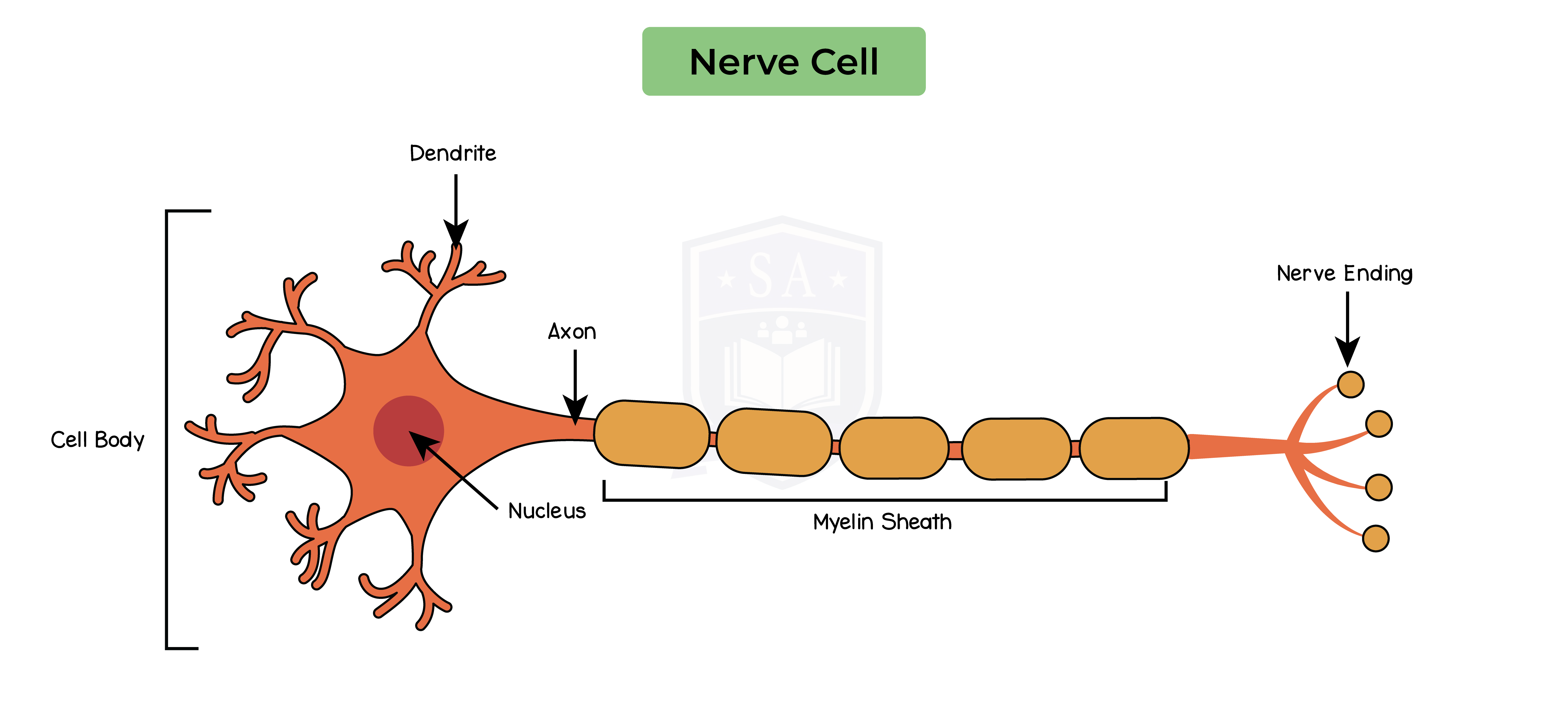
2.15.4 Understand that plants respond to stimuli
Plants can respond to changes in environment for survival
- Such stimuli include:
- Light
- Water
- Gravity
- Their responses are usually much slower than animals
2.15.5 Describe the geotropic and phototropic responses of roots and stems
Tropism:
Directional growth responses made by plants in response to light and gravity
- Phototropism: in response to light
- Gravitropism: in response to gravity
- Types of tropism
- Positive tropism: if the growth is towards the stimulus
- Negative tropism: if the growth is away from the stimulus
2.15.6 Understand the role of auxin in the phototropic response of stems
Auxins:
- Plant growth regulators produced
- Help to coordinate and control directional growth responses, such as:
- Phototropism
- Gravitropism
- Made in the tips of growing shoots
- They diffuses down to the region just below the tip
- Only the region behind the tip of a shoot is able to contribute to growth of plant
- Stimulate cells in this region to elongate
- The more auxins there are, the faster the elongation and growth are
Distribution of auxins:
- If light shines all around the tip:
- Auxins will be evenly distributed
- The cells in the shoot grow at the same rate
- If light shines on the shoot from one side:
- Auxins produced in the tip would concentrate on the shaded side
- Cells on the shaded side elongate and grow faster than cells on the sunny side
- Unequal growth results in the shoot bending
- Shoot grows in the direction of light
2.15.7 Describe how nervous and hormonal communication control responses and understand the differences between the two systems
Human control system:
- There are two different control systems in humans
- The nervous system
- The endocrine system (aka hormonal system)
- They work together to help us respond to stimuli
Human nervous system:
- The human nervous system allows us to
- Make sense of our surroundings
- Respond to our surroundings
- Coordinate and regulate body functions
- The human nervous system consists of:
- Central nervous system (CNS): brain and spinal cord
- Peripheral nervous system (PNS): all nerves in the body
2.15.8 Understand that the central nervous system consists of the brain and spinal cord and is linked to sense organs by nerves
The human nervous system consists of:
- Central nervous system (CNS) – the brain and the spinal cord
- Peripheral nervous system (PNS) – all the nerves in the body
- Information is sent through the nervous system as nerve impulses
- Electrical signals that pass along nerve cells known as neurones.
- A bundle of neurones is known as a nerve.

2.15.9 Understand that stimulation of receptors in the sense organs sends electrical impulses along nerves into and out of the central nervous system, resulting in rapid responses
Neurons:
- Neurones are highly specialised cells
- Their structure allows them to transmit information as nerve impulses over long distances
Adaptation of neurons:
- Neurones have a long fibre (axon)
- Less time is wasted transferring impulses from one cell to another
- The axon is insulated by a fatty myelin sheath
- Contains small uninsulated sections along it (called nodes).
- Electrical impulse does not travel down the whole axon, but jumps from one node to the next
- Their cell body contains many extensions called dendrites.
- This means they can connect to many other neurons and receive impulses from them
- Forms a network for easy communication
Three main types of neurons:
- Sensory neurons carry impulses from sense organs to the CNS (brain or spinal cord)
- Relay neurons are found inside the CNS and connect sensory and motor neurons
- Motor neurons carry impulses from the CNS to effectors (muscles or glands)
2.15.10 Understand the role of neurotransmitters at synapses
Synapse:
- Gap between two neurons
Role of neurotransmitters:
- An impulse arrives at the end of the presynaptic neuron
- Vesicles move towards, and fuse with the presynaptic membrane.
- This releases neurotransmitters into the synaptic cleft.
- The neurotransmitters diffuse across the synaptic cleft
- Down a concentration gradient
- Neurotransmitters attach to receptors on the postsynaptic membrane.
- This triggers an impulse which travels along the postsynaptic neurone.
- The neurotransmitters are recycled or destroyed once an impulse is sent.
Since the chemical transmitter is only produced on one side of the synapse, it ensures that impulses travel in one direction through the nervous system.
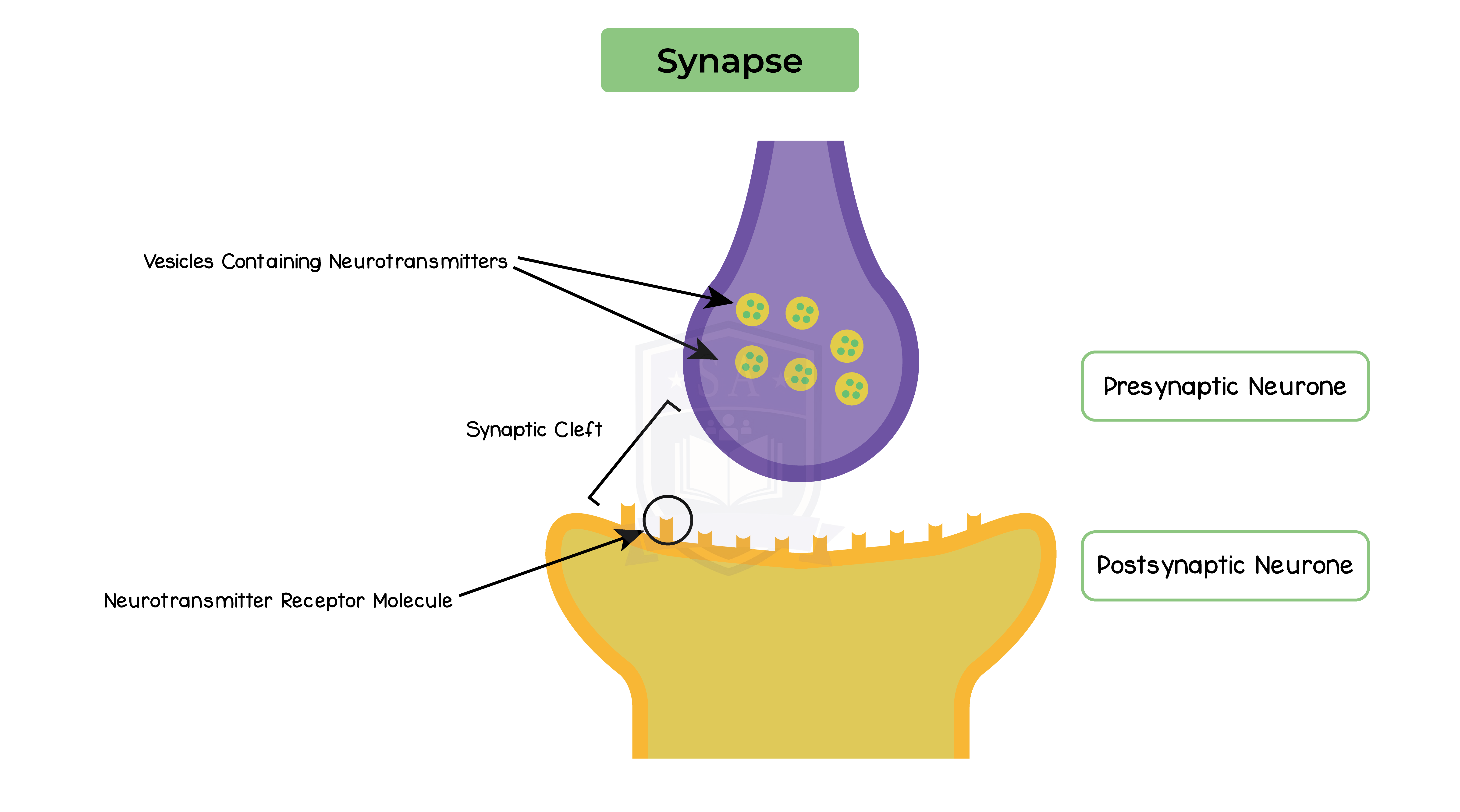

2.15.11 Describe the structure and functioning of a simple reflex arc illustrated by the withdrawal of a finger from a hot object
Reflex reaction:
- Reflex response ( involuntary response) does not involve the conscious part of the brain as the coordinator of the reaction
- Awareness of a response occurs after the response has been carried out
- Responses are automatic and rapid
- Helps to minimise damage to the body and aids survival
- A reflex arc is the pathway of a reflex response
- The pathway taken by electrical impulses as they travel along neurones
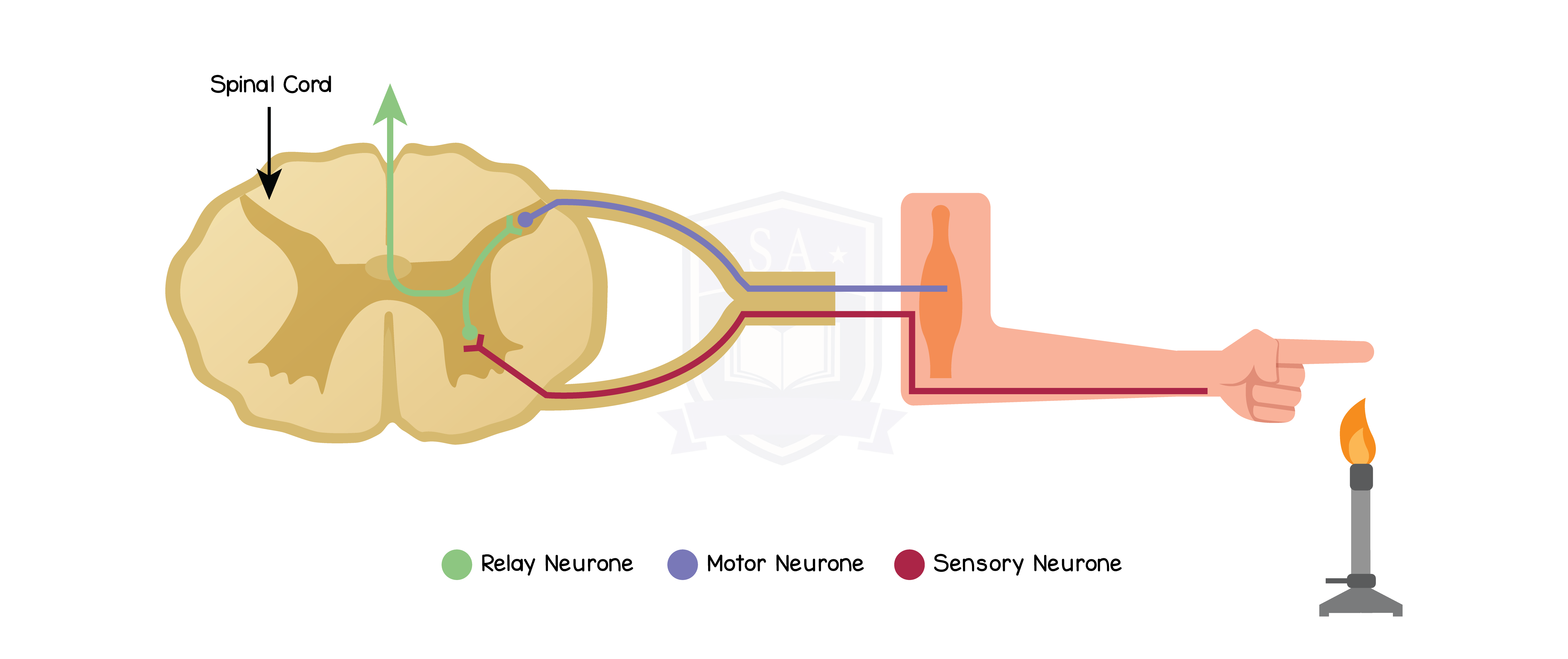
2.15.12 Describe the structure and function of the eye as a receptor
The eye is a highly specialised sense organ containing receptor cells that allow us to detect the stimulus of light
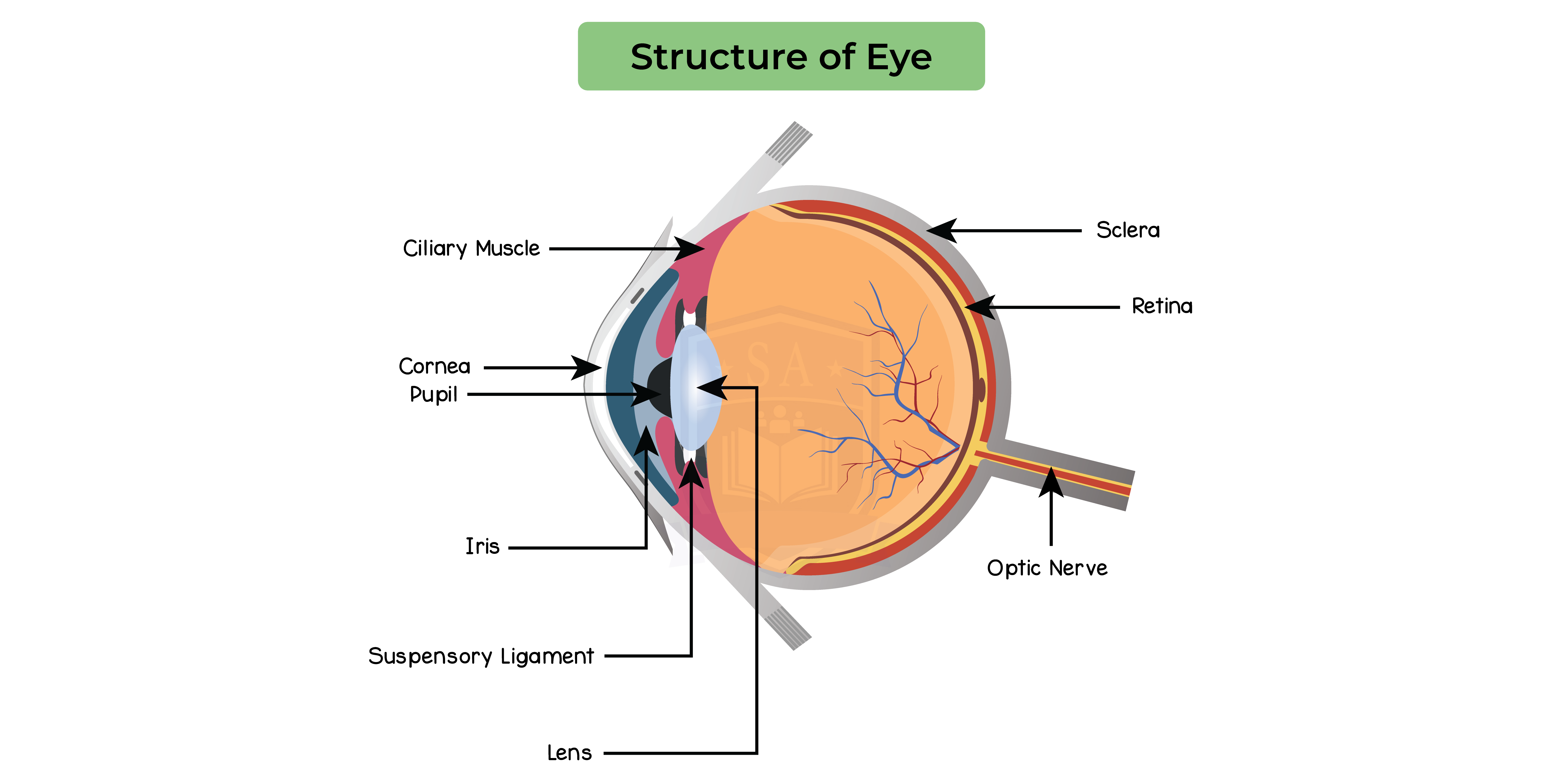
2.15.13 Understand the function of the eye in focusing on near and distant objects, and in responding to changes in light intensity
The function of the eye in focusing on near and distant objects
- Accommodation is the fine focusing of the lens
- The lens is elastic and its shape can be changed
- Suspensory ligaments attached to it become loser or tighter
- Changes are brought about by the contraction or relaxation of the ciliary muscles
The pupil reflex:
- A reflex action carried out to protect the retina from damage
- In dim light:
- The pupil dilates (widens)
- Allows as much light into the eye as possible
- Improves vision
- In bright light:
- The pupil constricts (narrows)
- Prevents too much light from entering the eye
- Prevents damaging the retina
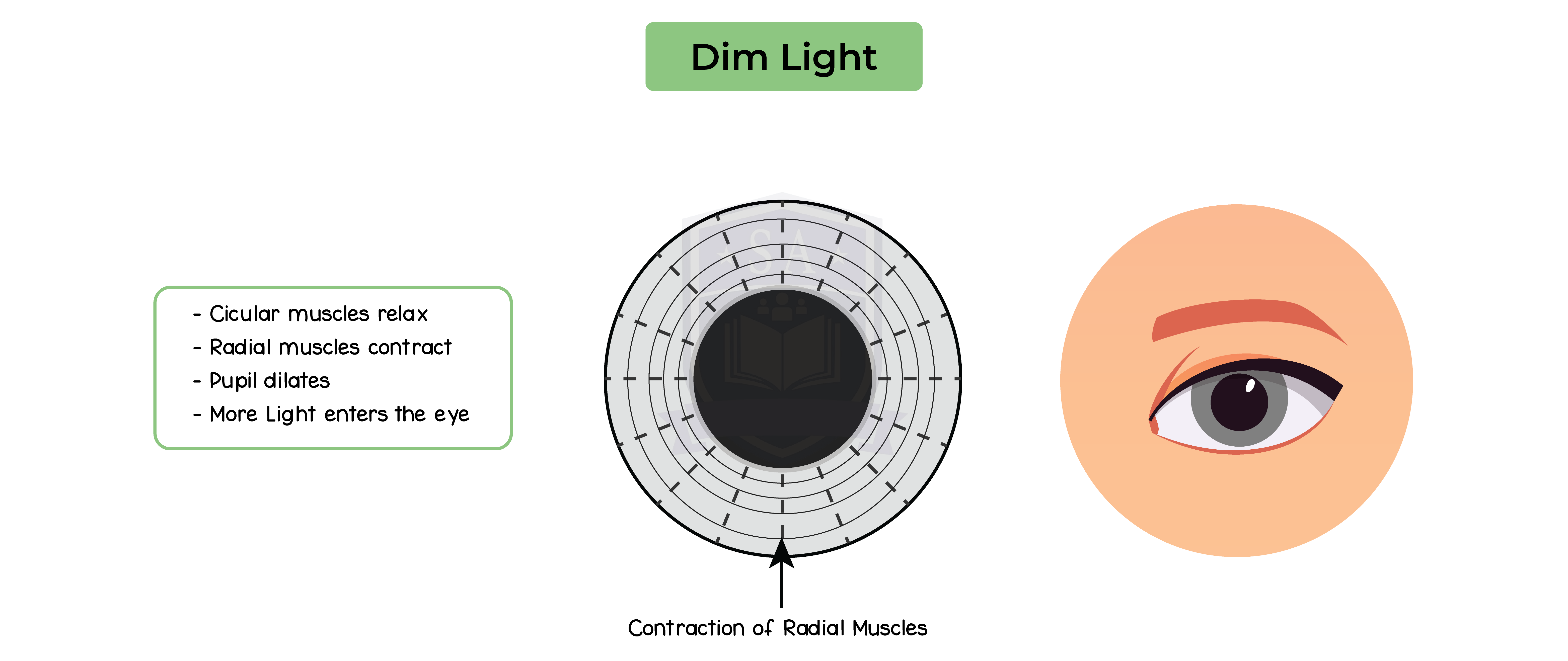
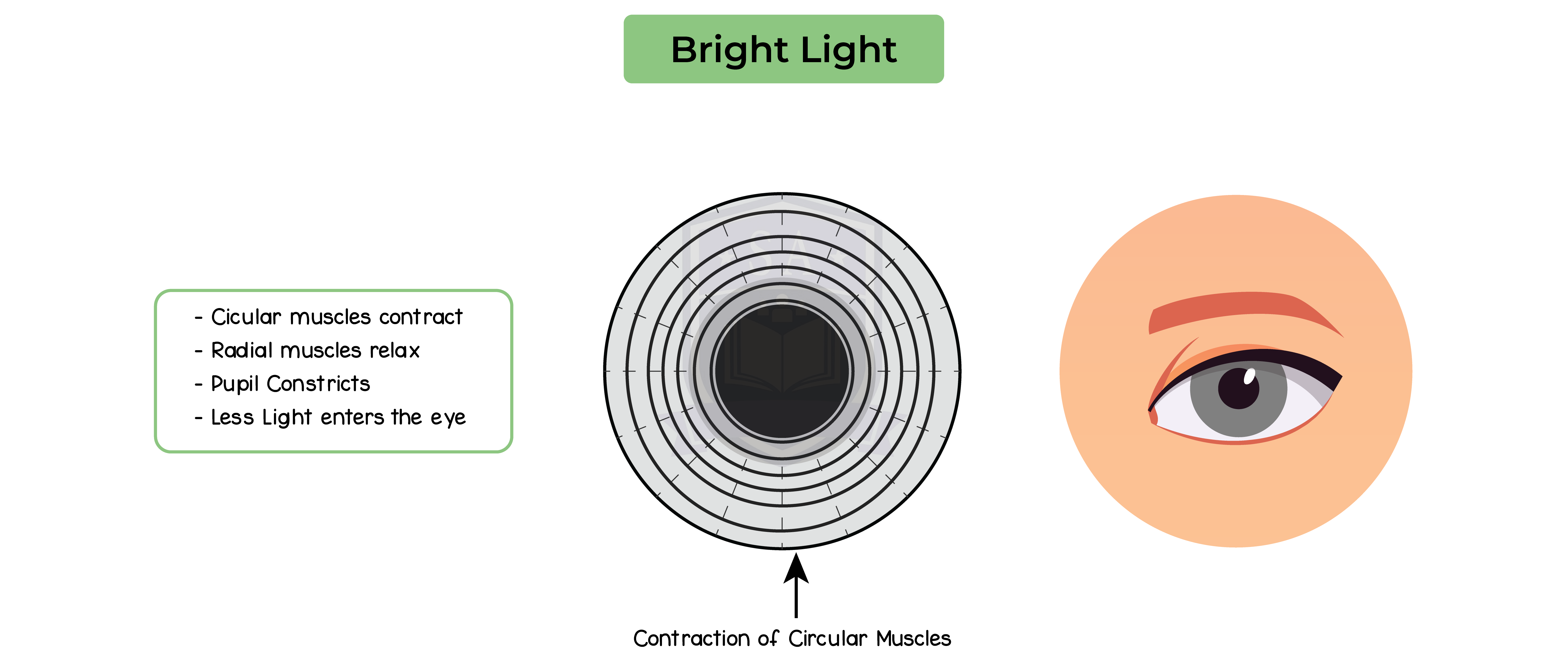
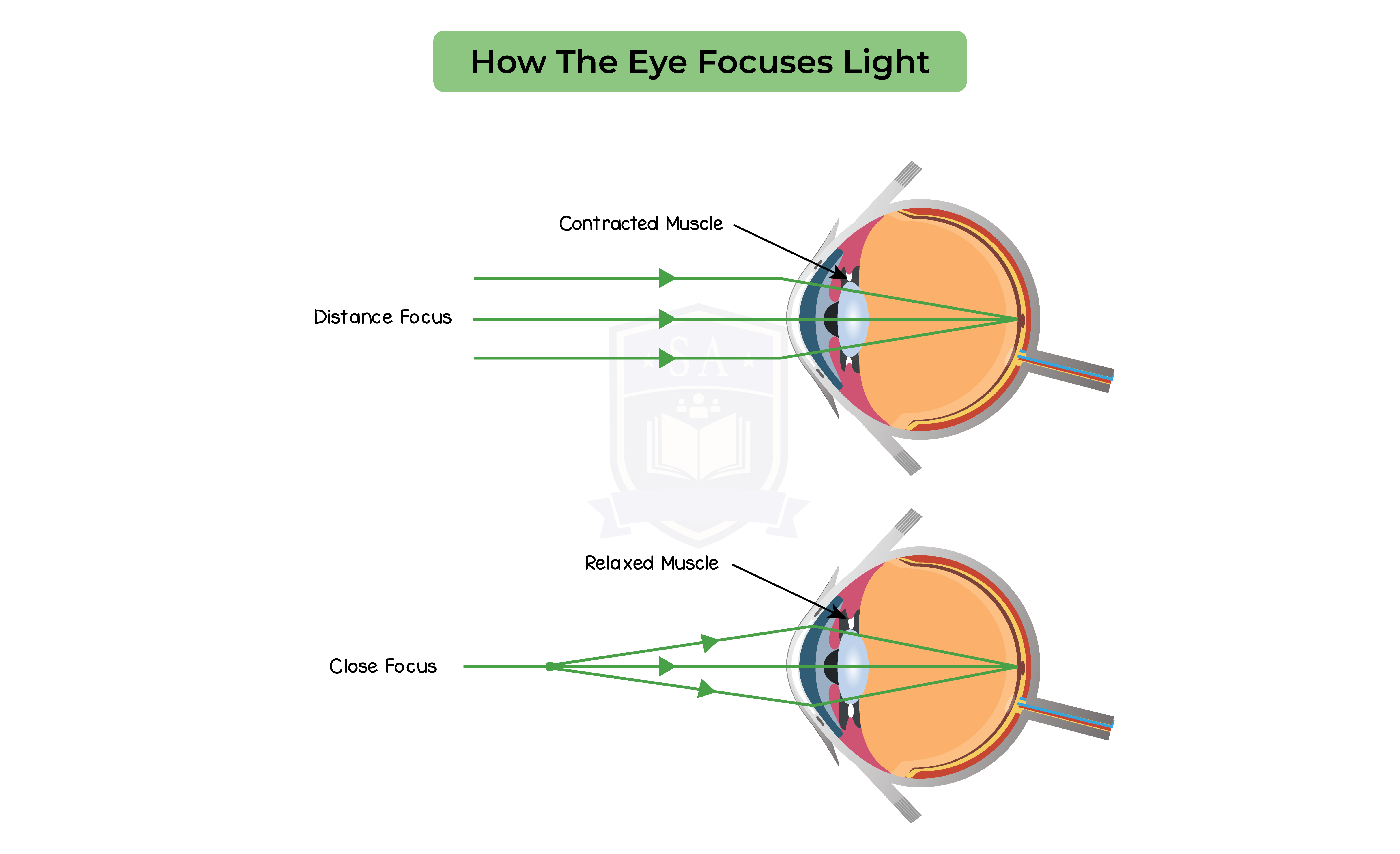
2.15.14 Describe the role of the skin in temperature regulation, with reference to sweating, vasoconstriction and vasodilation
Skin:
- Contains many different receptors
- Enables us to detect various external stimuli, including:
- Touch
- Pressure
- Pain
- Heat
- Cold
- Structures within the skin assist in regulating body temperature
Vasoconstriction:
- Occurs when we are cold
- Arterioles leading to the skin capillaries get narrower
- Blood flow in capillaries slows down
- The amount of heat lost from blood by radiation reduces as less blood flows through the surface of the skin
Vasodilation:
- Occurs when we are hot
- Blood vessels to the skin capillaries get wider
- Blood flow in capillaries increases
- This cools the body as blood is flowing at a faster rate through the skin’s surface and so more heat is lost by radiation.
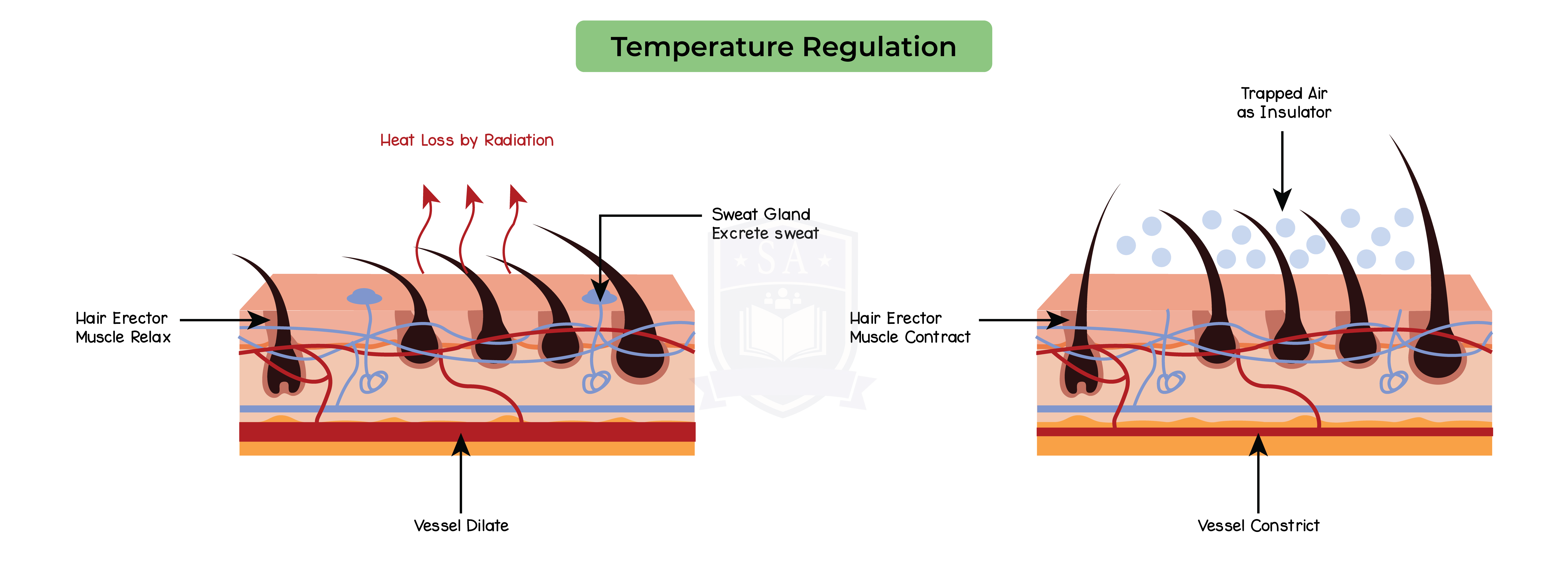
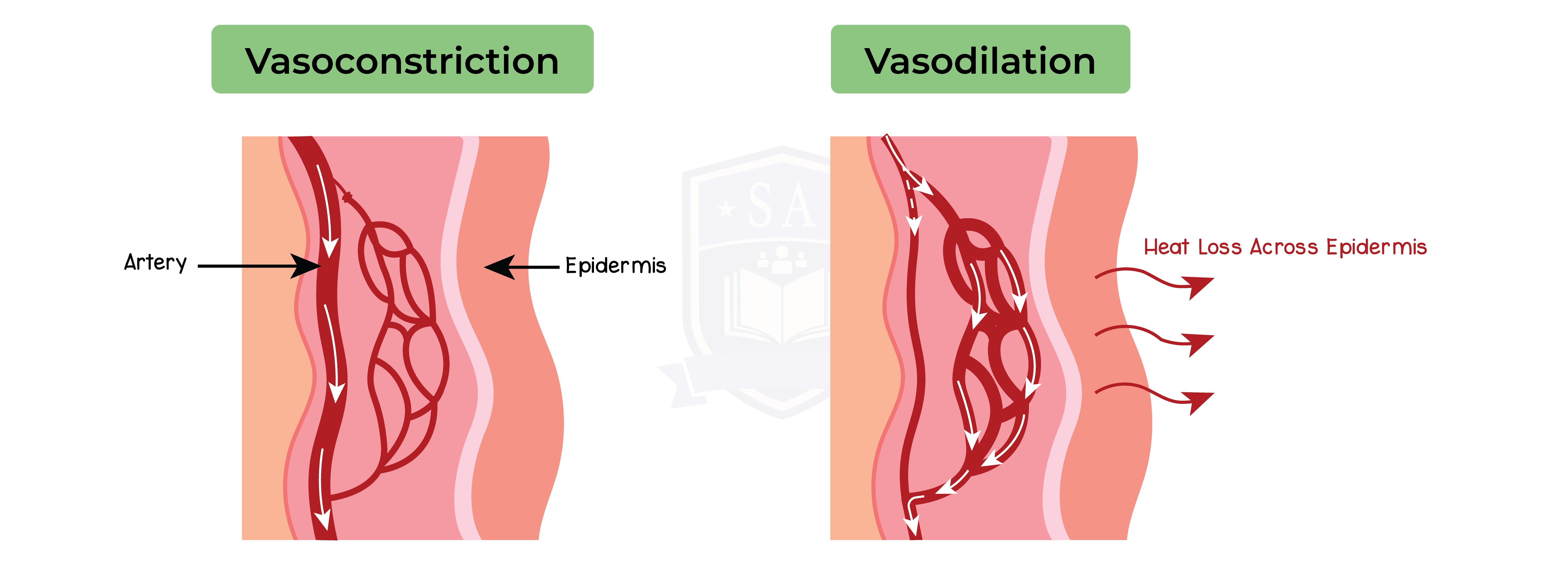
2.15.15 Understand the sources, roles and effects of the following hormones: adrenaline, insulin, testosterone, progesterone and oestrogen
2.15.16B Understand the sources, roles and effects of the following hormones: ADH, FSH and LH

